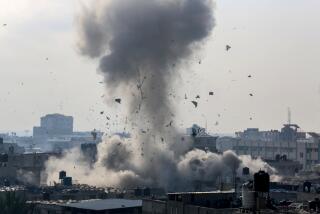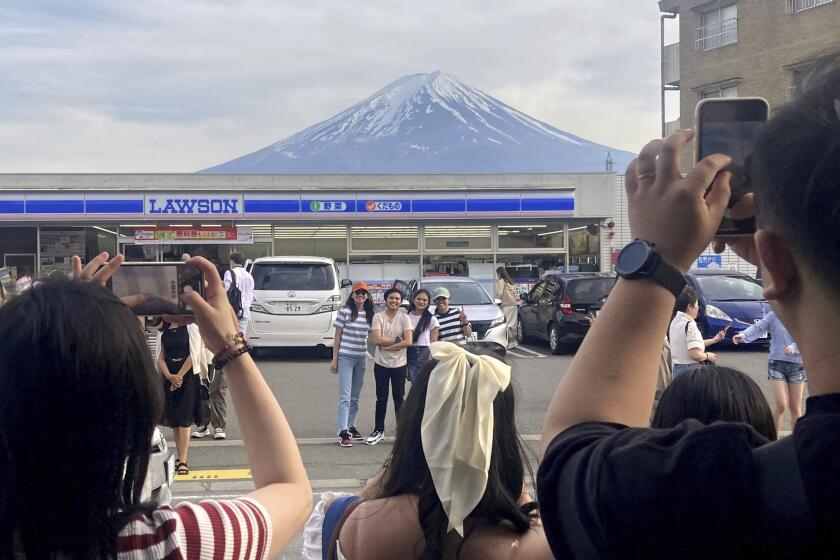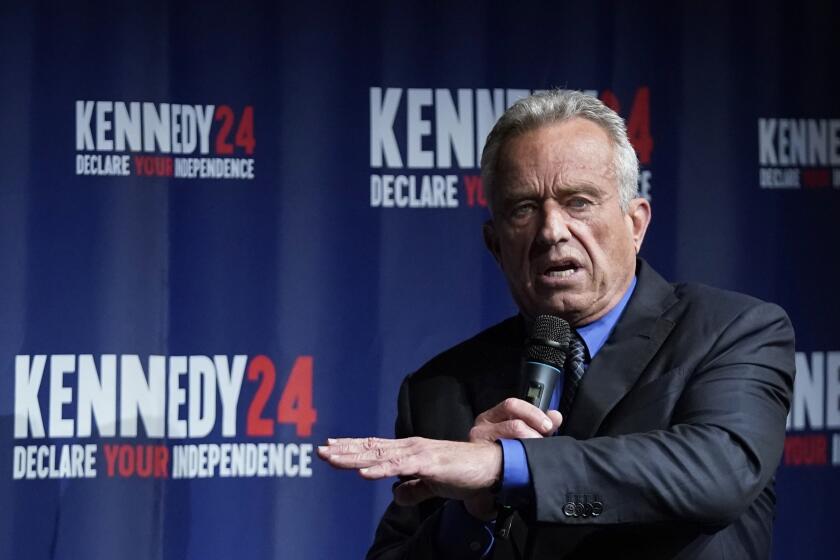Secret Anti-Terrorist Exercises Terrorize Citizens
A dozen U.S. Army Black Hawk helicopters, their lights out, descended from the night sky March 4 on a corner of Charlotte, N.C. They swooped among the high-rise apartment buildings, then dropped dozens of special operations troops, some with their weapons blasting, into an abandoned warehouse to capture a group of “terrorists.”
Some terrified residents grabbed their guns. Others ducked into doorways. The 911 line went crazy, as did Mayor Pat McCrory’s telephone line.
“I could barely hear the callers because of the helicopter noise and the gunfire in the background,” McCrory recalled.
Neither McCrory nor his police chief was sure what was going on. But they had a clue: Three months earlier, two men in jeans and T-shirts from the secretive U.S. Army Special Operations Command had visited McCrory’s office to ask permission to conduct urban counter-terrorism exercises that they said would go unnoticed. McCrory signed a confidentiality statement agreeing not to disclose the event beforehand for national security’s sake.
“We were misled,” said McCrory, who was forced by the public outcry to kick the Army out of Charlotte after the first of what was to have been three days of urban anti-terrorism training. “How they thought you could come in and out without any disturbance is beyond me. It was almost like a blitzkrieg operation. People went and got their guns. I feel fortunate no one was hurt.”
Over the last three years, the U.S. Army Special Operations Command has conducted at least 21 such exercises in 21 U.S. cities, including Atlanta, Chicago, Dallas, Detroit, Houston, Los Angeles, New Orleans, Miami, Pittsburgh and Seattle.
In city after city, the exercises have drawn fire from frightened residents who are not told beforehand that the roaring helicopters flying in circles several hundred feet overhead late at night--blacked out except for one that keeps on its tiny red taillight for safety--are trying to get as close as possible to the buildings they appear about to crash into.
The confusion and fear caused by their invasion is compounded when residents see dark-suited figures sliding down ropes dangling from the choppers and then begin firing loud blanks from their assault weapons. The simulated sound of grenades and incoming artillery often follows, as does, in some cases, the sound of real, small breaching explosives used to blast open doors.
To top it off, local police are on hand to keep traffic away from the exercise site--typically an abandoned warehouse, jail or apartment building--but often refuse to tell motorists what the commotion is about. Likewise with 911 operators and news media offices, which are not alerted to the exercises beforehand. Several callers to state law enforcement agencies have been told to call the Defense Department in Washington for information.
In June, troops were forced to leave Pittsburgh early because of the uproar. In Houston, a night’s exercise was cut short when a helicopter landed hard, rolled over and injured its two occupants. Thousands of callers to local media there demanded that the troops leave town. “Who invited them?” demanded one caller.
Exercises in a previously quiet Chicago suburb panicked residents there in 1995, and in 1990 exercises in Los Angeles were curtailed after inquisitive television and radio stations sent up helicopters to investigate a practice invasion above their city skyline, creating a safety problem.
After the Charlotte exercise--code-named Exercise Cauldron Chariot--the Federal Aviation Administration launched an investigation because the Army failed to coordinate the exercise with it, FAA spokesman Anthony Willett said. Special Operations Command spokesman Lt. Col. Pete Pierce said that the Army received approval from the Charlotte airport’s air traffic control tower and that it would “correct any coordination shortfall identified with the FAA.”
Pierce said the Army retreated early from Charlotte because the operations were more disruptive than anticipated. He said people on the several streets closest to the exercises were notified just before the maneuvers but, he added, “In the process of notification, people are going to get missed.”
Army officials argue that only cities give troops the chance to work on real-life challenges, such as using night vision equipment in partially lit areas, avoiding power lines and dropping troops quickly enough to go virtually unnoticed by the citizenry. It is safer for the troops to descend in secret than to alert residents and risk the sightseeing crowds that would gather, said one Army official, who added: “And they don’t want their equipment photographed. They don’t want their tactics, operations and procedures known.”
As the threat of urban terrorism abroad has increased, Army officials say it has become all the more important that their troops be skilled at flying into an urban obstacle course of skyscrapers and towers and inserting teams of special operations troops: Green Berets, Rangers, the 160th Special Operations Aviation Regiment and the supersecret Delta Force. Such troops would probably be deployed abroad to rescue hostages, capture bad guys and kill terrorists.
“I can’t imagine there isn’t an American around who wouldn’t want these guys to be as good as they can be,” said Army spokesman Lt. Col. Ray Whitehead. “This is real serious stuff.”
The exercises also draw criticism from citizens worried that the Army may be secretly training local police and SWAT teams, which is forbidden by U.S. law under most circumstances. The possible participation of U.S. troops in the 1993 Branch Davidian debacle near Waco, Texas, in which more than 80 people died, is still hotly debated within some circles.
U.S. law greatly restricts the type of training the military may conduct with domestic law enforcement agencies. Pierce said local law enforcement only provides support by blocking off roads, for example. Never, he said, did they train with special operations troops.
But some local police believe that joint training is part of the exercise.
Such was the case in Pittsburgh, where the Army brought in 14 helicopters and 200 special forces troops in June to practice at the former Allegheny County Jail, a downtown subway station, a former hospital, a vacant steel mill and an empty, 750,000-square-foot airport.
Craig Edwards, assistant superintendent of the Allegheny County Police Department, said the Army exercise was “a big joint effort” that trained city and county SWAT police. “We thought it went extremely well. Naturally, being police officers, we thought it was extremely necessary.”
“These guys [police] love that stuff,” Edwards said.
“It was great, but we look at the world a little bit differently,” he said, acknowledging the controversy within the community. “Terrorism can happen at any time.”
But, asked for a further description of the training, Lt. Bert Cifrulak, the Pittsburgh’s SWAT team leader, said Edwards was mistaken. “We conducted no training with them and we provided no training,” he said. “We sort of acted like tour guides” by identifying sites.
More to Read
Start your day right
Sign up for Essential California for news, features and recommendations from the L.A. Times and beyond in your inbox six days a week.
You may occasionally receive promotional content from the Los Angeles Times.






